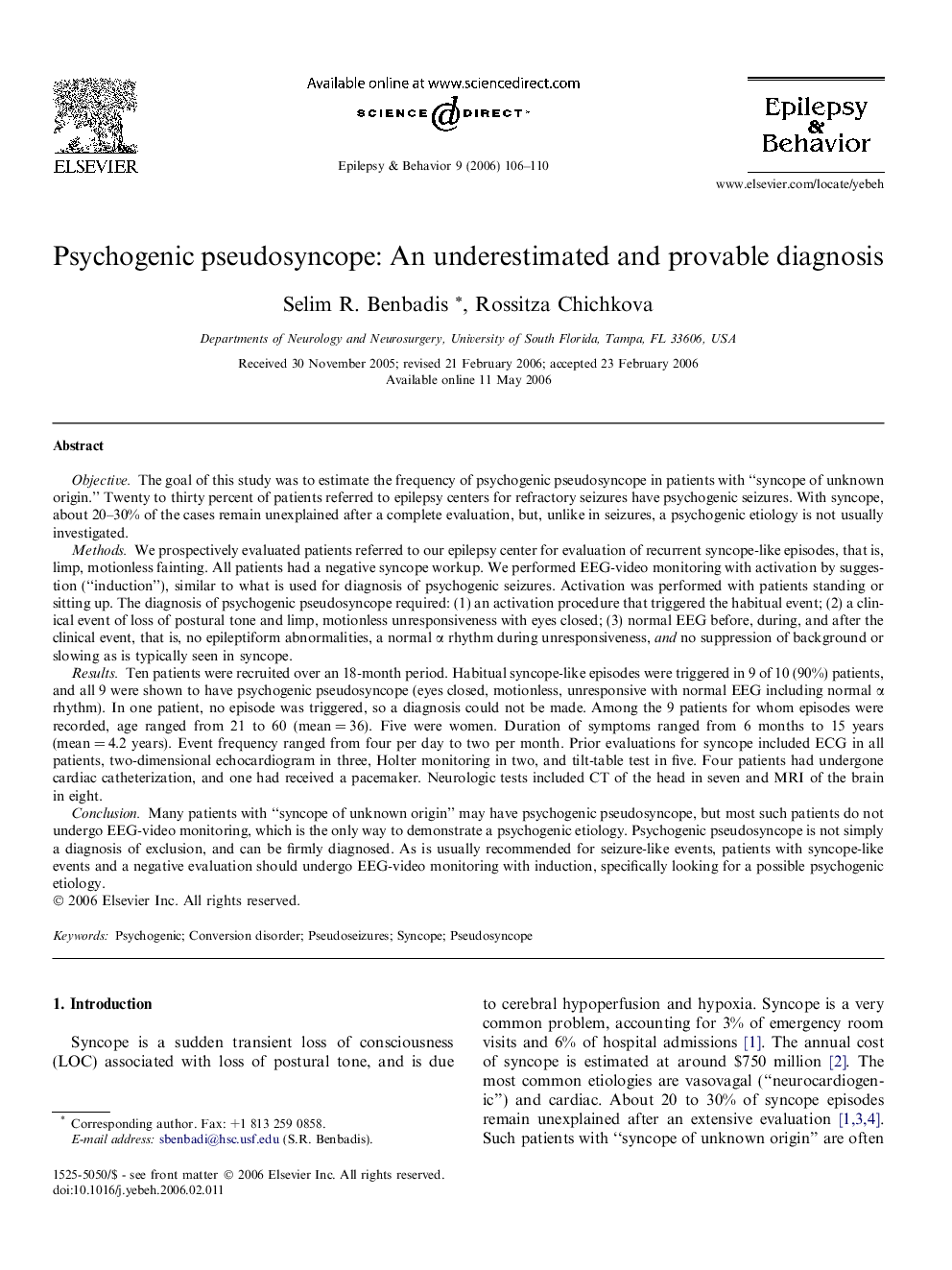| کد مقاله | کد نشریه | سال انتشار | مقاله انگلیسی | نسخه تمام متن |
|---|---|---|---|---|
| 3051477 | 1185986 | 2006 | 5 صفحه PDF | دانلود رایگان |

ObjectiveThe goal of this study was to estimate the frequency of psychogenic pseudosyncope in patients with “syncope of unknown origin.” Twenty to thirty percent of patients referred to epilepsy centers for refractory seizures have psychogenic seizures. With syncope, about 20–30% of the cases remain unexplained after a complete evaluation, but, unlike in seizures, a psychogenic etiology is not usually investigated.MethodsWe prospectively evaluated patients referred to our epilepsy center for evaluation of recurrent syncope-like episodes, that is, limp, motionless fainting. All patients had a negative syncope workup. We performed EEG-video monitoring with activation by suggestion (“induction”), similar to what is used for diagnosis of psychogenic seizures. Activation was performed with patients standing or sitting up. The diagnosis of psychogenic pseudosyncope required: (1) an activation procedure that triggered the habitual event; (2) a clinical event of loss of postural tone and limp, motionless unresponsiveness with eyes closed; (3) normal EEG before, during, and after the clinical event, that is, no epileptiform abnormalities, a normal α rhythm during unresponsiveness, and no suppression of background or slowing as is typically seen in syncope.ResultsTen patients were recruited over an 18-month period. Habitual syncope-like episodes were triggered in 9 of 10 (90%) patients, and all 9 were shown to have psychogenic pseudosyncope (eyes closed, motionless, unresponsive with normal EEG including normal α rhythm). In one patient, no episode was triggered, so a diagnosis could not be made. Among the 9 patients for whom episodes were recorded, age ranged from 21 to 60 (mean = 36). Five were women. Duration of symptoms ranged from 6 months to 15 years (mean = 4.2 years). Event frequency ranged from four per day to two per month. Prior evaluations for syncope included ECG in all patients, two-dimensional echocardiogram in three, Holter monitoring in two, and tilt-table test in five. Four patients had undergone cardiac catheterization, and one had received a pacemaker. Neurologic tests included CT of the head in seven and MRI of the brain in eight.ConclusionMany patients with “syncope of unknown origin” may have psychogenic pseudosyncope, but most such patients do not undergo EEG-video monitoring, which is the only way to demonstrate a psychogenic etiology. Psychogenic pseudosyncope is not simply a diagnosis of exclusion, and can be firmly diagnosed. As is usually recommended for seizure-like events, patients with syncope-like events and a negative evaluation should undergo EEG-video monitoring with induction, specifically looking for a possible psychogenic etiology.
Journal: Epilepsy & Behavior - Volume 9, Issue 1, August 2006, Pages 106–110